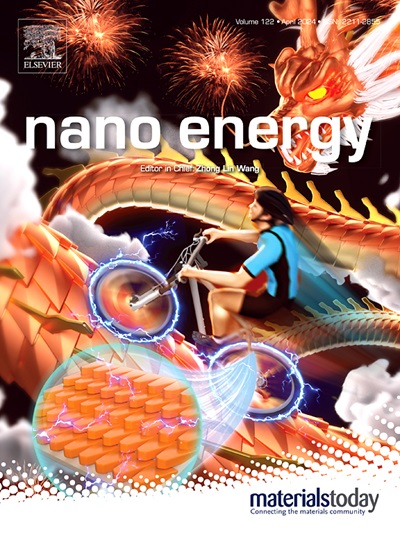亲锂二级结构为高稳定性的锂金属电池提供了坚固的固体电解质界面
IF 16.8
1区 材料科学
Q1 CHEMISTRY, PHYSICAL
引用次数: 0
摘要
具有大比表面积的3D衬底可以减少阳极的体积变化,从而实现锂金属电池的稳定。然而,锂枝晶的生长和电极-电解质界面的副反应阻碍了lmb的容量和长期稳定性,这些问题仍然无法通过扩大比表面积来解决。本研究构建了具有纤维二级结构的CuO/Cu3N泡沫集流器,其中活性位点的增加和亲石性的表层加速了锂的输移动力学,并且在镀锂过程中产生坚固的Li2O/Li3N固体电解质界面(SEI),有效减少了不良副反应,促进了锂的均匀沉积。CuO/Cu3N foam@Li对称电池在高电流密度和容量为5 mA cm−2和5 mAh cm−2的情况下,稳定循环时间超过1500 h,循环寿命超过500 h。CuO/Cu3N foam@Li||LFP全电池具有优异的循环性能,循环次数达350次,容量保持率高达78 %。这项工作为高能lmb先进集流器的开发提供了有价值的见解。本文章由计算机程序翻译,如有差异,请以英文原文为准。

Lithophilic secondary structure enables robust solid electrolyte interface for highly stable lithium metal battery
The 3D substrates with large specific surface area which can reduce the volume change of anodes have been used to realize stable lithium metal batteries (LMBs). However, the capacity and long-term stability of LMBs are hampered by the growth of lithium dendrites and side reactions of the electrode-electrolyte interface, which are still unable to be addressed by the enlarged specific surface. In this study, CuO/Cu3N foam current collector with fiber secondary structure is constructed, where the increased active sites and lithophilic surface layer accelerate the kinetics of lithium transport, and the sturdy Li2O/Li3N solid electrolyte interface (SEI) is generated during the lithium plating, which effectively reduces the adverse side reactions and promotes the uniform deposition of Li. The symmetric cell of CuO/Cu3N foam@Li cycles stably for more than 1500 h and exhibits an outstanding cycle life of more than 500 h at high current density and capacity of 5 mA cm−2 and 5 mAh cm−2. And CuO/Cu3N foam@Li||LFP full cell exhibits an excellent cycling performance of 350 cycles with a high capacity retention rate of 78 %. This work provides valuable insights into the development of advanced current collectors for high-energy LMBs.
求助全文
通过发布文献求助,成功后即可免费获取论文全文。
去求助
来源期刊

Nano Energy
CHEMISTRY, PHYSICAL-NANOSCIENCE & NANOTECHNOLOGY
CiteScore
30.30
自引率
7.40%
发文量
1207
审稿时长
23 days
期刊介绍:
Nano Energy is a multidisciplinary, rapid-publication forum of original peer-reviewed contributions on the science and engineering of nanomaterials and nanodevices used in all forms of energy harvesting, conversion, storage, utilization and policy. Through its mixture of articles, reviews, communications, research news, and information on key developments, Nano Energy provides a comprehensive coverage of this exciting and dynamic field which joins nanoscience and nanotechnology with energy science. The journal is relevant to all those who are interested in nanomaterials solutions to the energy problem.
Nano Energy publishes original experimental and theoretical research on all aspects of energy-related research which utilizes nanomaterials and nanotechnology. Manuscripts of four types are considered: review articles which inform readers of the latest research and advances in energy science; rapid communications which feature exciting research breakthroughs in the field; full-length articles which report comprehensive research developments; and news and opinions which comment on topical issues or express views on the developments in related fields.
 求助内容:
求助内容: 应助结果提醒方式:
应助结果提醒方式:


